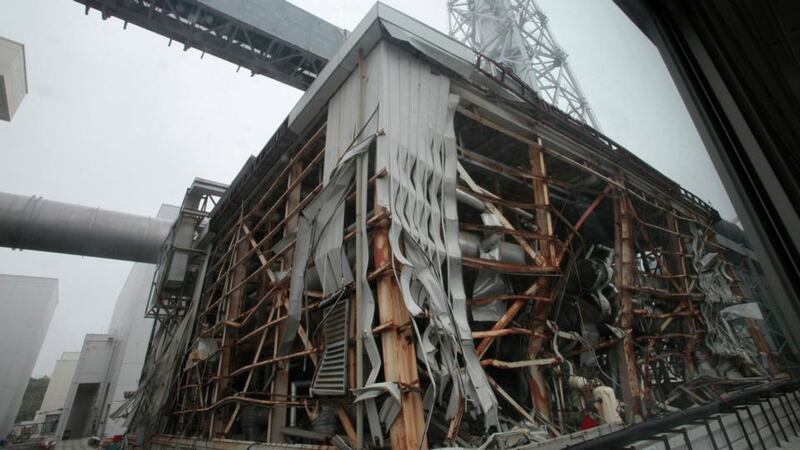Japan has pledged nearly €380 million to fund measures designed to contain leaks and decontaminate radioactive water from the tsunami-crippled Fukushima nuclear plant, stepping up government efforts to cope with the legacy of the worst atomic disaster in a quarter of a century.
The announcement comes just days before the International Olympic Committee decides whether Tokyo - 230 km (140 miles) from the wrecked plant - will host the 2020 Olympic Games and the government is keen to show the crisis is under control. Madrid and Istanbul are the rival candidates.
“The world is watching to see if we can carry out the decommissioning of the Fukushima nuclear power plant, including addressing the contaminated water issues,” prime minister Shinzo Abe told cabinet ministers, who met to approve the plan.

The government intervention represents only a tiny slice of the response to the Fukushima crisis triggered by the March 2011 earthquake and tsunami, which caused reactor meltdowns at the plant. The clean-up, including decommissioning the ruined reactors, will take decades and rely on unproven technology.
The measures which include building a wall of ice underneath the plant, do not address the full problem of water management at the plant or the bigger issue of decommissioning. The sensitive job of removing spent fuel rods is to start in the coming months. The ultimate fate of the plant’s operator, Tokyo Electric Power Co (Tepco), also remains unclear, as does the question of who will eventually foot the bill - Japanese taxpayers, or the embattled Tepco.
“This is a matter of public safety, so the country has to take the lead on this issue and respond as quickly as possible. Figuring out who to bill for the costs can come later,” Economics Minister Akira Amari told a news conference.
Chief Cabinet Secretary Yoshihide Suga told a separate news conference that the government would spend a total of 47 billion yen (€358 million), including 21 billion yen in emergency reserve funds from this year’s budget.
Of that, 32 billion yen will fund the building of a massive underground wall of frozen earth around the damaged reactors to contain groundwater flows, and 15 billion yen to improve a water treatment system meant to drastically reduce radiation levels in the contaminated water.
Tepco criticism
Tepco, Japan’s biggest utility, has come under a fresh flood of criticism following a stream of bad news including its admission, after repeated denials, that contaminated water was flowing into the Pacific Ocean. That was followed by leaks from above-ground tanks used to store radiated water.
The problems have revived notions, debated but rejected in the months after the March 2011 disaster, of liquidating Tepco or at least splitting off the Fukushima operation from its other businesses and putting it under direct government control.
“Is anyone at Tepco taking responsibility for these mistakes? I haven’t heard of anyone stepping down or being fired,” said Taro Kono, a ruling Liberal Democratic Party deputy secretary general who is critical of nuclear utilities. “Tepco needs to go down and the government needs to take over,” he said, acknowledging his was a minority view in the ruling party.
Industry minister Toshimitsu Motegi and ruling party officials have said liquidating Tepco was not being considered as an option.
Critics said the government was mainly trying to cool down international media coverage ahead of the Olympics decision.
“At a moment when international public opinion is worrying about the long-term consequences of repeated leaks at the site, Tokyo seems to obeying the short-term logic of waiting until the Olympics decision is over,” Mycle Schneider, an independent nuclear energy analyst based in Paris who frequently visits Japan, said by email. A more sustainable option, he added, would be to seek global support to confront Fukushima’s unprecedented challenges.
Mr Motegi denied the Olympic bid was the main motivating factor. “The government felt that we want to be fully involved and put together fundamental measures regardless of the decision on where they will hold the Games,” he said.
Off-limits
Measurable radiation from water leaking from the facility is confined to the harbour around the plant, Mr Motegi noted, and is not an environmental threat to other countries because the radiation will be diluted by the sea.
The peak release of radiation in the sea around Fukushima came about a month after the earthquake and tsunami. Ocean currents have since dispersed the plume and sent the diluted radiation in a slow drift towards the West Coast of the United States, studies have shown. The amount of radiation expected to reach Canadian and US coastal waters in the years ahead is projected to be well within safety limits for drinking water as it will have been greatly diluted.
The closest towns to the stricken plant remain deserted and off-limits to the public. But some former residents have started to return to their homes, some of which are less than 20 kms away, as decontamination work progresses.
China said last month it was “shocked” to hear that contaminated water was still leaking from storage tanks and urged Japan to give timely and accurate information. Tepco is storing enough contaminated water to fill more than 130 Olympic-sized swimming pools, mostly in hastily built tanks that officials have said may spring further leaks.
The planned measures are daunting. Freezing earth to block water flows is a technology commonly used in digging subway tunnels, but is untested on the Fukushima scale and the planned duration of years or decades. The decontamination technology has repeatedly suffered from glitches.
The Advanced Liquid Processing System (Alps), developed by Utah-based EnergySolutions and Toshiba Corp, can remove all radioactive particles from water except tritium, considered the least harmful to humans. But the system has been stalled for months due to mishaps.
Tepco said earlier that patrolling workers had found a new area of high radiation near water storage tanks.
Reuters









